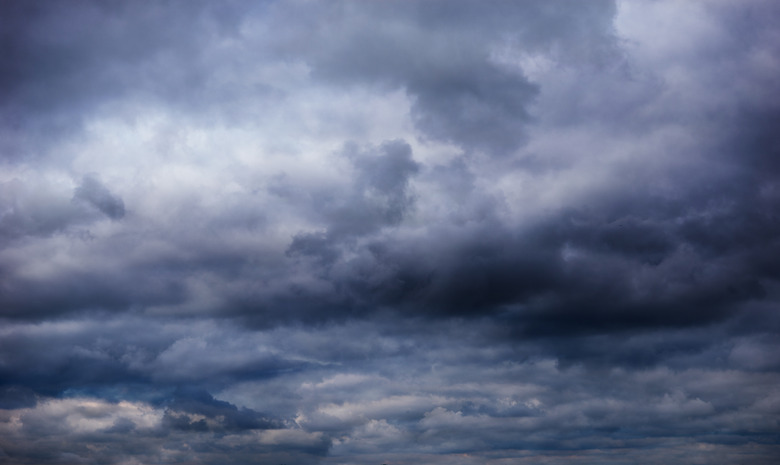A Major Difference Between Cyclones & Anticyclones Is What?
If you're interested in extreme weather conditions, you need to know more about cyclone and anticyclone activity. Cyclones and anticyclones are both wind systems indicating distinctive weather patterns, but they have opposite characteristics. A major difference is that a cyclone is a low pressure system and an anticyclone is a high pressure system.
Cyclone Definition and Properties
Cyclone Definition and Properties
A cyclone, commonly known as a low, is an area of low pressure where air masses meet and rise. It typically indicates bad weather, like rain and clouds. Winds in a cyclone blow counterclockwise in the Northern Hemisphere and clockwise in the Southern Hemisphere.
In a cyclone, air near the ground is pushed toward the low-pressure center of the cyclone, and then rises upward, expanding and cooling as it moves. As it cools, the rising air becomes more humid, leading to cloudiness and high humidity within the cyclone.
One of the deadliest cyclones in history occurred in the Bay of Bengal in 1970, causing an estimated 300,000 to 500,000 deaths in Bangladesh and India's West Bengal.
Anticyclone Definition and Properties
Anticyclone Definition and Properties
An anticyclone, commonly known as a high, is an area of high pressure where air moves apart and sinks. It typically indicates fair weather. Winds in an anticyclone blow clockwise in the Northern Hemisphere and counterclockwise in the Southern Hemisphere.
Air at the center of an anticyclone is forced away from its area of high pressure and replaced by a downward blast of air from higher altitudes. The air compresses and heats up as it moves downward, reducing its humidity and leading to fewer clouds within the anticyclone.
Difference Between Cyclone and Hurricane
Difference Between Cyclone and Hurricane
Cyclones that form over warm tropical oceans are called tropical cyclones, tropical storms or tropical depressions. To be classed as a tropical cyclone, winds must reach 34 knots (39 miles per hour). When a tropical cyclone tops 65 knots (74 miles per hour) in the eastern Pacific, the Atlantic Ocean or the Atlantic's adjoining seas, it is known as a hurricane. An Atlantic hurricane, for example, usually starts off the coast of West Africa and travels in a westerly direction toward central America and the eastern United States, getting bigger and stronger until it reaches land.
The deadliest hurricane in U.S. history was the Great Galveston Hurricane, which hit the city of Galveston, Texas, in 1900 and caused an estimated 8,000 to 12,000 deaths.
In the western Pacific Ocean and its adjoining seas, a hurricane is known as a typhoon.
Cite This Article
MLA
Gillespie, Claire. "A Major Difference Between Cyclones & Anticyclones Is What?" sciencing.com, https://www.sciencing.com/major-difference-between-cyclones-anticyclones-8252667/. 22 November 2019.
APA
Gillespie, Claire. (2019, November 22). A Major Difference Between Cyclones & Anticyclones Is What?. sciencing.com. Retrieved from https://www.sciencing.com/major-difference-between-cyclones-anticyclones-8252667/
Chicago
Gillespie, Claire. A Major Difference Between Cyclones & Anticyclones Is What? last modified March 24, 2022. https://www.sciencing.com/major-difference-between-cyclones-anticyclones-8252667/
